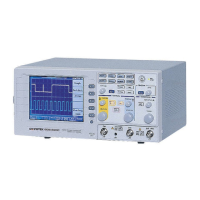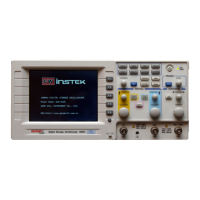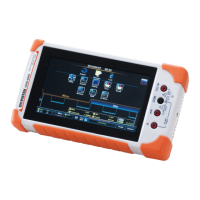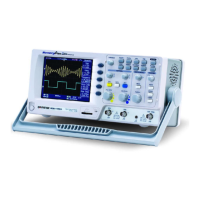GDS-806/810/820/840 Programming Manual
71
5. Status Reports
A set of status registers allows the user to quickly determine the Digital storage
oscilloscope’s internal processing status. The status register, as well as the status
and event reporting system, adhere to SCPI recommendations.
Structure of System
The sketch of the status and event reporting system is showed on figure 5-1. Each
component of the sketch represents a set of registers and queues which can read,
report, or enable the occurrence of certain events within the system.
If a specific event in the Digital storage oscilloscope that sets a bit in a status
register, reading the status registers can tell you what types of events have
occurred.
Each bit in the status register corresponds to a bit in an enable register; the enable
bit must be high for the event to be reported to the Status Byte Register.
A Service Request (SRQ) is the last event to occur. The SRQ requests an interrupt
on the GPIB to report events to the system controller.
Status Registers
There are two kinds of status registers are included with this oscilloscope.
z OPERation Status Registers ( CONDition, EVENt, and ENABle)
z QUEStionable Status Registers (CONDition, EVENt, and ENABle)
The STATus subsystem is the hierarchical set of commands (Figure 5-2) that read
the SCPI defined status registers.
The lower level nodes: QUEStionable and OPERation each have three 16 bits
registers: CONDition, EVENt, and ENABle. Figure 5-3 shows the sequential
relationship between these three types of registers and the commands that relate
to each register.

